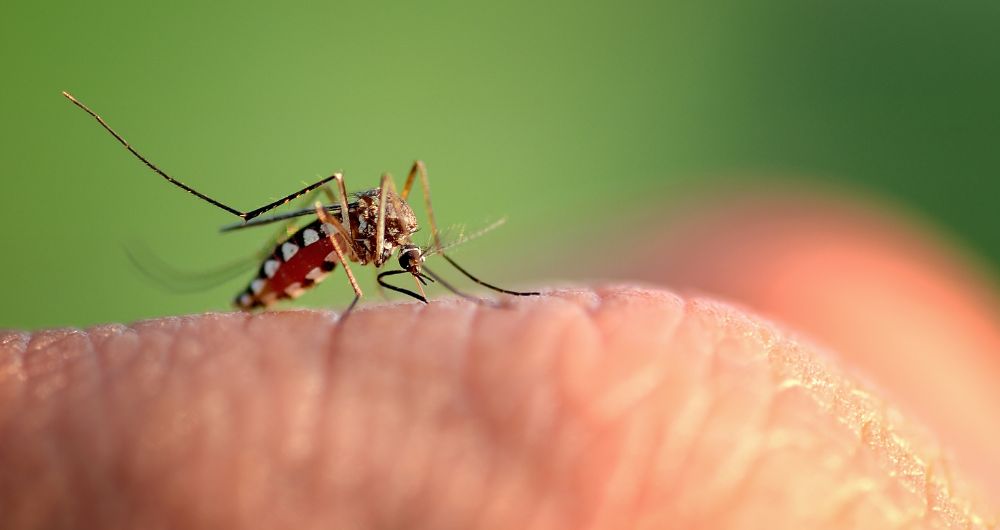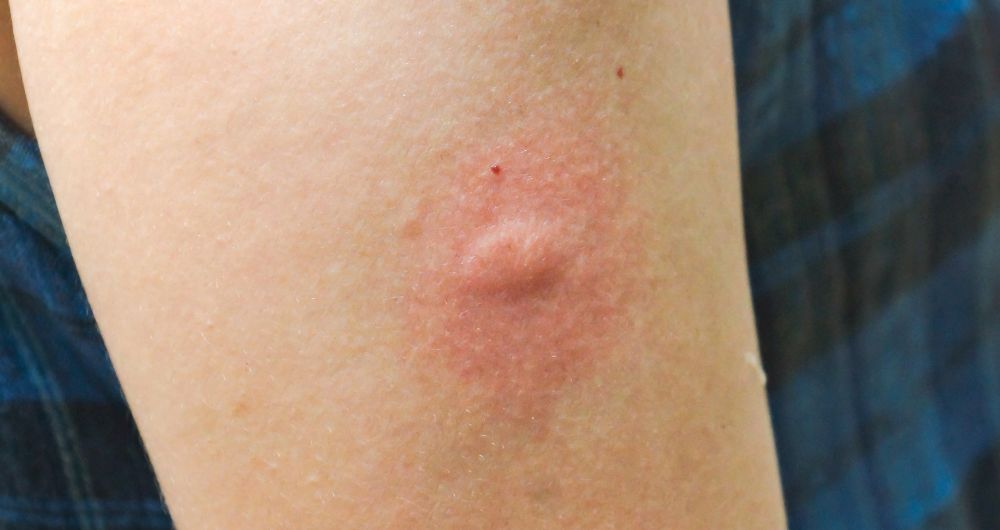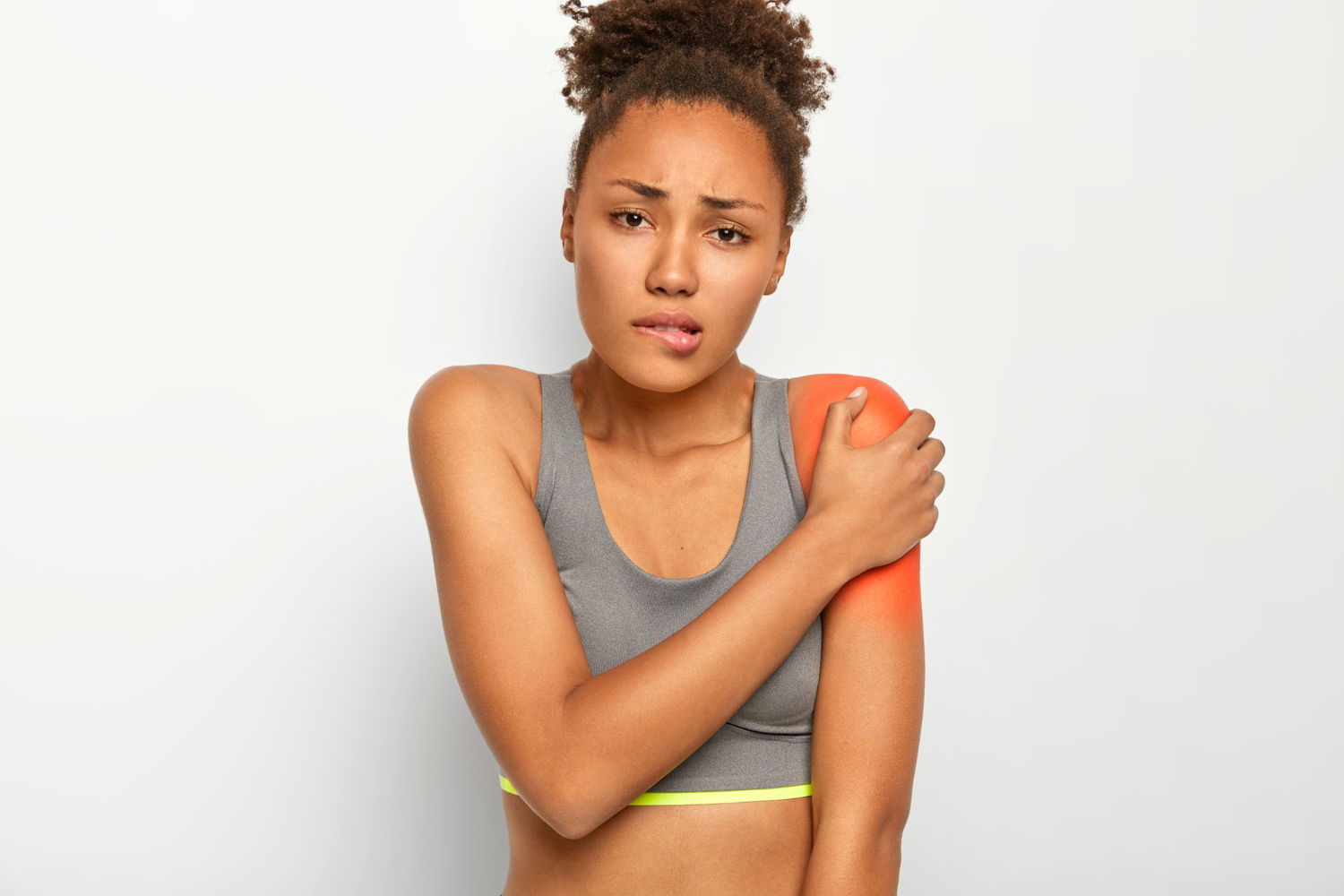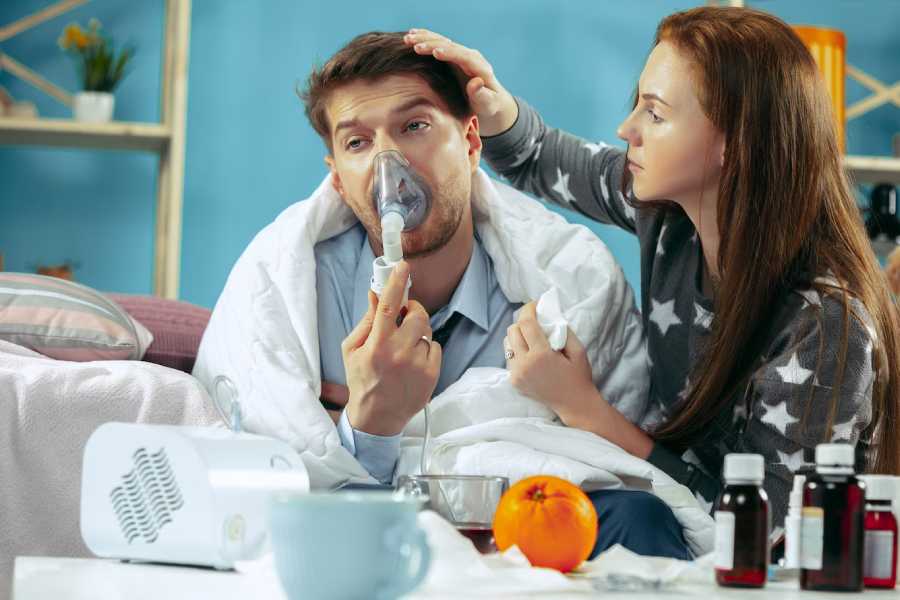
Navigating the symptoms of bites and rashes can be daunting and understanding when to seek urgent care in Stamford, CT, is crucial for prompt medical intervention. By understanding the nuances of these symptoms, individuals can confidently navigate their healthcare journey and seek the necessary assistance.
Here, are ten prevalent symptoms to watch for, empowering you to take proactive steps in:
It’s important to know about common skin problems like bites and rashes that might require a visit to urgent care in Stamford, CT. Sometimes, these issues can get bad enough to need quick medical attention. Here are common bites and rash symptoms to look out for:
Mosquito bites typically present as itchy, raised bumps on the skin, often accompanied by redness and mild swelling. The itching sensation is caused by the body’s reaction to mosquito saliva injected into the skin during feeding.
Tick bites can vary depending on the tick species and whether it carries any pathogens. Common symptoms include redness, irritation, and sometimes the development of a bullseye rash, particularly indicative of Lyme disease.
Depending on the type of spider, spider bite symptoms can range from mild irritation to severe reactions. Common signs include swelling, redness, pain, and sometimes the presence of fang marks. Severe reactions may include muscle pain, nausea, and difficulty breathing, requiring immediate medical attention.
Bee stings typically result in immediate pain, swelling, and redness at the site of the sting. Some individuals may experience allergic reactions, such as hives, swelling of the face or throat, difficulty breathing, or even anaphylaxis. Prompt treatment, including epinephrine for severe reactions, is essential.
Ant bites often present as red, itchy bumps on the skin, which may develop into painful pustules or blisters, particularly if scratched. Some ant species, such as fire ants, can cause severe allergic reactions in sensitive individuals, leading to symptoms like swelling, hives, and difficulty breathing.
Flea bites are characterized by small, red, itchy bumps, typically clustered in groups or lines on the skin. They are commonly found on the legs and feet, as fleas tend to target areas of the body with less hair. Scratching flea bites can lead to secondary infections, so avoiding excessive scratching is important.
Bed bug bites often result in red, itchy welts on exposed areas of the skin, such as the face, neck, arms, and hands. Depending on the bed bug’s feeding behavior, these bites may appear in a linear pattern or grouped together. While bed bugs are not known to transmit diseases, their bites can cause significant discomfort and itching.
Contact with poison ivy, poison oak, or poison sumac plants can lead to a red, itchy, blistering rash, usually appearing in streaks or patches on the skin. This rash is caused by exposure to urushiol oil in these plants, and symptoms may worsen over time if not treated promptly.
Allergic reactions to insect bites, certain foods, medications, or environmental allergens can manifest as swelling, hives, itching, redness, and difficulty breathing. In severe cases, anaphylaxis can occur, leading to a sudden drop in blood pressure, loss of consciousness, and respiratory distress, requiring immediate medical intervention.
Bacterial or fungal infections of the skin can cause symptoms such as redness, warmth, swelling, pain, and sometimes pus or drainage. Common types of skin infections include cellulitis, impetigo, and fungal infections like ringworm.
Bites and rash symptoms can differ in several key ways:
Bites are typically caused by insect or animal bites, whereas rashes can result from various factors including allergic reactions, infections, or exposure to irritants like poison ivy.
Bites often appear as raised bumps or welts on the skin, sometimes with a central puncture mark in the case of insect bites. Rashes, however, can manifest as redness, inflammation, blisters, or a patchy, scaly texture depending on the underlying cause.
Bites tend to be accompanied by itching, which is often localized to the site of the bite. Rashes may also itch, but the intensity and distribution of itching can vary depending on the cause and severity of the rash.
Bites may occur where exposure to insects or animals is more likely, such as exposed skin or outdoor environments. Rashes can occur anywhere on the body and may be localized or widespread depending on the cause.
Bites often occur after direct contact with insects or animals and may be immediately noticeable. Rashes can develop over time as a reaction to an allergen or irritant or as a secondary symptom of an underlying condition such as an infection.

Skin bites and rashes can result from various factors, from insect bites to allergic reactions and underlying medical conditions. Understanding the common causes of these skin manifestations is essential for effective management and timely treatment.
Contact dermatitis occurs when the skin comes into contact with irritants or allergens, leading to inflammation and a localized rash. Common irritants include soaps, detergents, cleaning products, and chemicals, while allergens may include plants like poison ivy, poison oak, or poison sumac. Symptoms typically include redness, itching, and sometimes blistering or oozing of the affected area.
Various infections, including bacterial, viral, and fungal, can cause skin rashes. Bacterial infections like impetigo or cellulitis can lead to red, swollen, and sometimes painful lesions on the skin.
Autoimmune diseases like lupus, dermatomyositis, or psoriasis can affect the skin, leading to chronic inflammatory reactions and rashes. In these conditions, the body’s immune system mistakenly attacks healthy tissues, resulting in symptoms such as redness, scaling, and sometimes skin ulceration.
Heat rash, or prickly heat, occurs when sweat ducts become blocked, trapping sweat beneath the skin’s surface. This can lead to the formation of small, red bumps on the skin, often accompanied by itching or discomfort. Heat rash is common in hot and humid environments or individuals who sweat excessively.
Identifying and avoiding triggers that may induce herpes outbreaks is a key part of managing the condition. Common triggers can include stress, certain foods (such as nuts and chocolate for some individuals), excessive sun exposure, and illness. By recognizing your triggers and taking steps to minimize their impact, you can reduce the frequency and severity of outbreaks. Additionally, managing stress through relaxation techniques or counseling can be especially helpful in preventing flare-ups.
Some medications can cause adverse reactions in the form of skin rashes or hives, known as drug eruptions or drug-induced skin reactions. These reactions can vary widely in severity, ranging from mild itching and redness to more serious conditions like Stevens-Johnson syndrome or toxic epidermal necrolysis, which can be life-threatening.
Stress or anxiety can sometimes manifest as skin reactions, such as hives, rashes, or exacerbation of existing skin conditions like eczema or psoriasis. The exact mechanisms underlying stress-induced skin reactions are not fully understood but may involve the release of stress hormones like cortisol, which can affect the immune system and skin barrier function.
Knowing when to seek urgent care in Stamford, CT, for bites and rash symptoms is crucial for the timely treatment and management of potentially serious conditions. Here are some scenarios when urgent care in Stamford, CT, may be necessary:
If you experience symptoms of anaphylaxis after a bite or exposure to an allergen, such as difficulty breathing, facial or throat swelling, rapid heartbeat, or dizziness, seek immediate medical attention.
If you develop a rash that covers a large area of your body, is spreading rapidly, or is accompanied by symptoms like fever, severe pain, or blistering, it’s important to seek urgent care in Stamford, CT.
Watch for signs of infection around the bite or rash area, such as increasing redness, warmth, swelling, pain, pus, or drainage. These could indicate a bacterial infection requiring antibiotics or other medical interventions at an urgent care in Stamford, CT.
If your symptoms are severe enough to interfere with your ability to perform daily activities or if you experience significant pain, discomfort, or distress, it’s a sign to seek urgent care in Stamford, CT. Healthcare providers can assess your condition and provide appropriate treatment to alleviate your symptoms and promote healing.
If you’ve been bitten by a tick and are concerned about the risk of tick-borne illnesses like Lyme disease or Rocky Mountain spotted fever, it’s important to seek urgent care in Stamford, CT, especially if you develop symptoms such as fever, headache, fatigue, joint pain, or a spreading rash.
Children, elderly individuals, and those with compromised immune systems may be more susceptible to complications from bites and rashes. If you’re caring for a vulnerable individual who develops concerning symptoms, seek urgent care in Stamford, CT, promptly to ensure they receive appropriate care.

An urgent care center in Stamford, CT, typically assesses and treats skin bites and rashes based on the severity of the condition. Here’s what they might do:
The urgent care in Stamford, CT, will examine the affected area to determine the cause and severity of the skin bite or rash. They may ask about symptoms, recent exposures, and medical history.
Based on the assessment, the urgent care in Stamford, CT, may diagnose the condition, ranging from insect bites to allergic reactions or skin infections.
Treatment options may vary depending on the diagnosis and severity of the symptoms. Common treatments for skin bites and rashes may include:
The urgent care in Stamford, CT, may recommend follow-up care to monitor the condition’s progress and ensure effective treatment. They may also provide instructions on when to seek additional medical attention if symptoms persist or worsen.
Home remedies can often provide relief for mild cases of skin bites and rashes. Here are some effective home treatments you can try:
The urgent care in Stamford, CT, might advise you to apply a cold compress to the affected area to reduce swelling and itching. Wrap the ice pack in a cloth to prevent direct contact with the skin and apply it for 10-15 minutes.
The urgent care in Stamford, CT, might recommend an oatmeal bath for soothing relief. Taking a bath with colloidal or adding oatmeal to lukewarm bathwater can soothe itching and irritation caused by bites and rashes. Oatmeal has anti-inflammatory properties that can help calm inflamed skin and relieve discomfort.
Another remedy suggested by urgent care in Stamford, CT, is creating a paste with baking soda and water. This paste can be applied directly to the affected area to relieve itching and irritation. Leave the paste for 10-15 minutes before rinsing it with lukewarm water.
Applying aloe vera gel directly from the plant or a store-bought source is a common recommendation from urgent care in Stamford, CT. Aloe vera gel is known for its soothing and healing properties for skin injuries, making it effective for treating skin irritations, including bites and rashes. Apply pure aloe vera gel directly to the affected area and allow it to dry. Repeat several times a day as needed.
Calamine lotion contains ingredients like zinc oxide and ferric oxide, which have anti-itch and anti-inflammatory properties. Apply calamine lotion to the affected area to help relieve itching and dry out oozing or weeping rashes.
Tea tree oil has antimicrobial and anti-inflammatory properties, making it beneficial for treating skin infections and reducing inflammation. Dilute tea tree oil with a carrier oil like coconut oil and apply it to the affected area to help alleviate itching and promote healing.
Another suggestion from urgent care in Stamford, CT, is to apply witch hazel compresses to the affected area. Witch hazel has astringent properties that can reduce inflammation and itching.
Medical specialists at urgent care centers in Stamford, CT, might advise applying honey to the affected area for its therapeutic antibacterial and anti-inflammatory properties, making it effective for treating minor skin irritations. Apply a thin layer of honey to the affected area and cover it with a bandage. Leave it on overnight or overnight before rinsing it off with lukewarm water.
If itching is severe, taking an over-the-counter antihistamine like diphenhydramine (Benadryl) or cetirizine (Zyrtec) can help reduce itching and inflammation associated with bites and rashes. Follow the dosage instructions on the packaging and consult a healthcare professional if you have any concerns.
While these home remedies can relieve mild cases, if you experience severe symptoms or your condition worsens, seek urgent care in Stamford, CT, for prompt medical attention and appropriate treatment.
A meningitis rash typically appears as small, red, or purple spots on the skin that don’t fade when pressed. It may resemble tiny pinpricks or bruises and is often associated with other symptoms such as fever, headache, and stiff neck.
Signs that your body is fighting an infection include fever, chills, fatigue, muscle aches, swollen lymph nodes, and increased white blood cell count. These symptoms indicate that your immune system is responding to an invading pathogen.
Blood poisoning, or sepsis, can cause the skin to appear mottled, discolored, or purplish. Other signs may include fever, rapid heartbeat, rapid breathing, confusion, and low blood pressure. Prompt medical attention is crucial for treating sepsis.
A rash that resembles bites can be caused by various factors, including allergic reactions to plants, insect bites or stings, contact dermatitis from certain fabrics or chemicals, or infections like scabies or folliculitis. Additionally, certain skin conditions such as hives or eczema can present with rash-like symptoms.
Sometimes, a rash may resolve independently without medical intervention, especially if it is mild and caused by temporary factors such as contact with irritants or allergens. However, if the rash persists, worsens, or is accompanied by other concerning symptoms such as fever or difficulty breathing, it’s important to seek medical attention.
Whether you’re dealing with skin bites, rashes, or any other health concern, DOCS Urgent Care Stamford is here to provide immediate care when needed. No appointments are necessary. At DOCS Urgent Care Stamford, we understand the stress that comes with skin bites and rashes, so we prioritize low wait times and accept most major health insurance plans.
Get relief for your skin bites and rashes now! Visit our urgent care clinic today!



During this surge in COVID-19 cases, our primary focus is meeting the high demand for tests, and we are seeing higher than usual wait times. This means we are unable to answer most phone calls. Please know that our teams are working very hard during this time to care for as many patients as safely as possible. Please click the button below for answers to common questions. We appreciate your understanding.